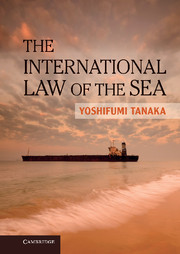Book contents
- Frontmatter
- Contents
- Preface
- Acknowledgements
- Figures
- Tables
- Abbreviations
- Table of Cases
- Table of Treaties and Instruments
- Part I The Divided Oceans: International Law Governing Jurisdictional Zones
- 1 The Law of the Sea in Perspective
- 2 Baselines and Related Issues
- 3 Marine Spaces under National Jurisdiction I: Territorial Sovereignty
- 4 Marine Spaces under National Jurisdiction II: Sovereign Rights
- 5 Marine Spaces beyond National Jurisdiction
- 6 Maritime Delimitation
- Part II Our Common Ocean: Protection of Community Interests at Sea
- Index
- References
2 - Baselines and Related Issues
Main Issues
from Part I - The Divided Oceans: International Law Governing Jurisdictional Zones
- Frontmatter
- Contents
- Preface
- Acknowledgements
- Figures
- Tables
- Abbreviations
- Table of Cases
- Table of Treaties and Instruments
- Part I The Divided Oceans: International Law Governing Jurisdictional Zones
- 1 The Law of the Sea in Perspective
- 2 Baselines and Related Issues
- 3 Marine Spaces under National Jurisdiction I: Territorial Sovereignty
- 4 Marine Spaces under National Jurisdiction II: Sovereign Rights
- 5 Marine Spaces beyond National Jurisdiction
- 6 Maritime Delimitation
- Part II Our Common Ocean: Protection of Community Interests at Sea
- Index
- References
Summary
A primary task of the law of the sea is to determine the spatial extent of the coastal State jurisdiction over the oceans. The seaward limits of each jurisdictional zone are measured from baselines. Thus rules concerning baselines are of particular importance in the law. In particular, rules governing straight baselines and bays merit serious consideration. Furthermore, attention must be devoted to the legal status of islands and low-tide elevations because the existence of these maritime features may affect the seaward limits of marine spaces under national jurisdiction. Against that background, this chapter will address rules concerning baselines and related issues, focusing mainly on the following questions.
What are the rules governing baselines?
What are the problems associated with rules with regard to straight baselines?
What are the rules governing juridical bays in international law?
What is a historic bay and what are the elements of title to such a bay?
What is the definition of islands?
What are the differences between islands, rocks and low-tide elevations?
Introduction
In the international law of the sea, the scope of jurisdictional zones under national jurisdiction is to be determined on the basis of distance from the coast. Thus it is important to identify the line from which the outer limits of marine spaces under the national jurisdiction of the coastal State are measured. This line is called the baseline. At the same time, the baseline is the line distinguishing internal waters from the territorial sea. The distinction is important because the legal regime of internal waters differs from that of the territorial sea.
Information
- Type
- Chapter
- Information
- The International Law of the Sea , pp. 43 - 75Publisher: Cambridge University PressPrint publication year: 2012
